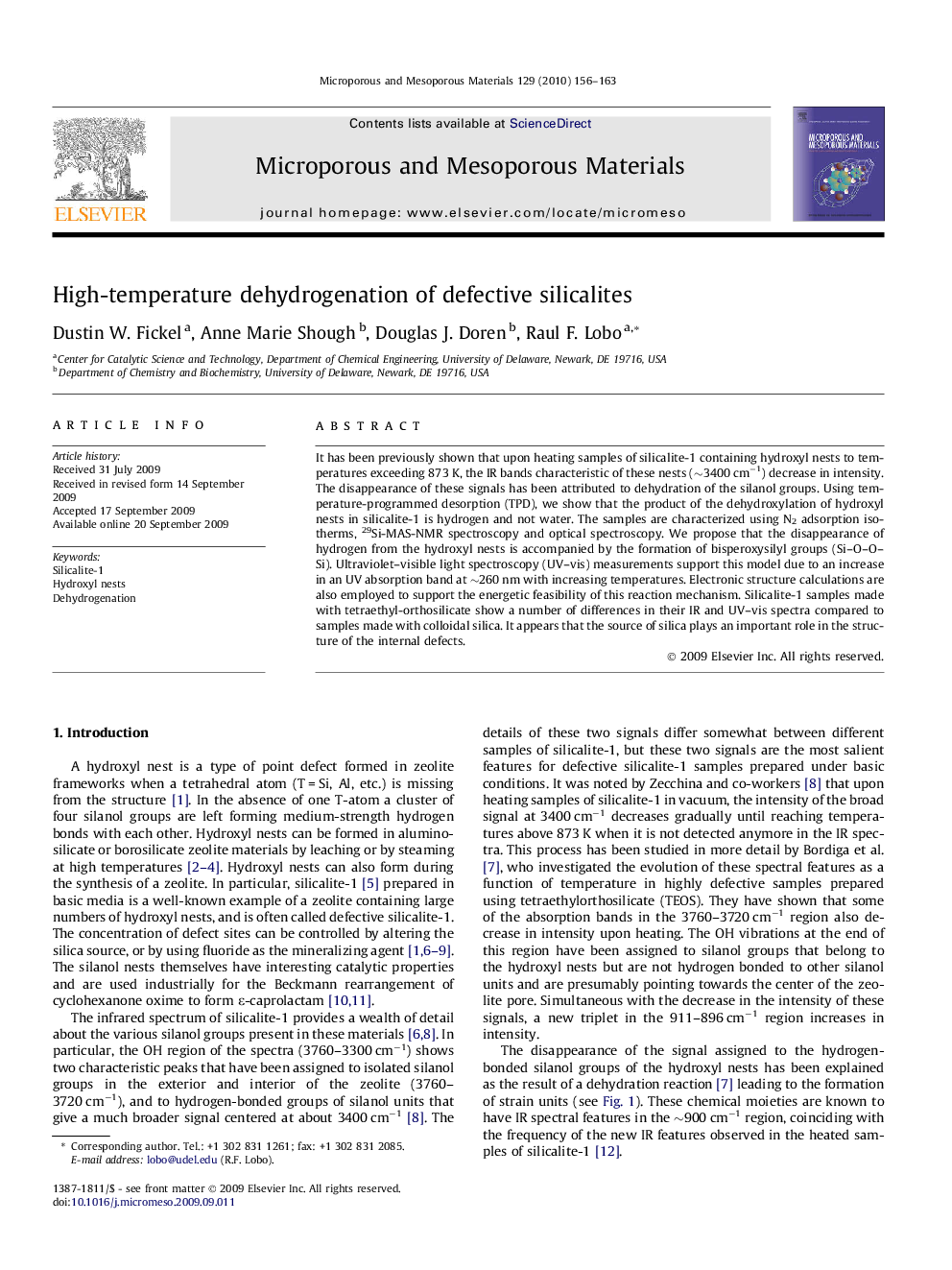| کد مقاله | کد نشریه | سال انتشار | مقاله انگلیسی | نسخه تمام متن |
|---|---|---|---|---|
| 75667 | 49121 | 2010 | 8 صفحه PDF | دانلود رایگان |

It has been previously shown that upon heating samples of silicalite-1 containing hydroxyl nests to temperatures exceeding 873 K, the IR bands characteristic of these nests (∼3400 cm−1) decrease in intensity. The disappearance of these signals has been attributed to dehydration of the silanol groups. Using temperature-programmed desorption (TPD), we show that the product of the dehydroxylation of hydroxyl nests in silicalite-1 is hydrogen and not water. The samples are characterized using N2 adsorption isotherms, 29Si-MAS-NMR spectroscopy and optical spectroscopy. We propose that the disappearance of hydrogen from the hydroxyl nests is accompanied by the formation of bisperoxysilyl groups (Si–O–O–Si). Ultraviolet–visible light spectroscopy (UV–vis) measurements support this model due to an increase in an UV absorption band at ∼260 nm with increasing temperatures. Electronic structure calculations are also employed to support the energetic feasibility of this reaction mechanism. Silicalite-1 samples made with tetraethyl-orthosilicate show a number of differences in their IR and UV–vis spectra compared to samples made with colloidal silica. It appears that the source of silica plays an important role in the structure of the internal defects.
Journal: Microporous and Mesoporous Materials - Volume 129, Issues 1–2, 1 April 2010, Pages 156–163